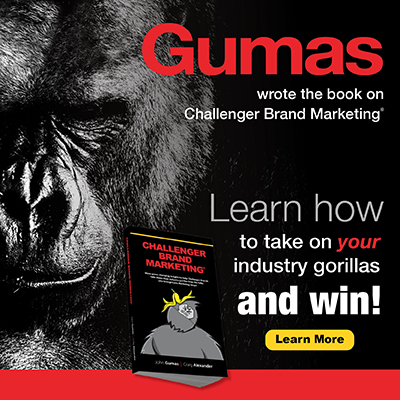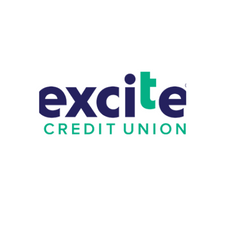Your logo is literally your brand. And I use “literally” in the literal sense, not in its most common, colloquial, Milennial sense like, “Our product will literally change the world.” In this context, think of your logo as you would imagine a rancher’s brand – the red-hot iron that seers a single image into the hide of a steer to identify its owner and fend off rustlers.
With apologies to animal welfare advocates, of which I am one, the brands of the old west effectively, and often ominously, let the world know of the organization behind the cattle upon which the descriptive and iconic mark lies. “The Rocking R,” “The Flying Triple J,” “The Circle K” (see what I did there?), all can be communicated with a single integrated image. Ranchers of western lore knew the basic principles of logo design – keep it simple, communicate clearly and make it proprietary.
Challenger Brands must approach logo design with these tenets in mind in order to create a brand mark that adequately reflects who the organization is, what they stand for and how they provide value for their customers. We define a logo, along with its accompanying tagline, as the brand’s promise. Does your current logo articulate your brand’s promise?
You’ll notice the requisite inclusion of the tagline in the logo development. We encourage Challenger Brands to integrate their tagline into their logo as we believe this overall mark represents a piece of sales collateral that does the selling for you, even when you’re not in the room.
The business world is cluttered with thousands of logos of all styles, shapes, colors and meaning. Some spartan and literal, others abstract and provocative. Some basic wordmarks, others complex illustrations. Most, however, miss the mark (if you’ll pardon the pun), either due to poor aesthetics, poor articulation, or both.
As you’ve likely heard us say before, Challenger Brands get one shot at getting it right, so kindly allow us to share with you 10 considerations for designing an impactful logo:
- Include Your Tagline – Lock up your tagline with the logo to ensure you are adequately communicating your brand’s promise.
- Keep It Simple – Create a mark that immediately articulates its message; no one wants to sit and study a logo to try and figure out the complex hidden meaning buried somewhere deep within the image. Here’s a little secret, there’s no hidden message; it’s just a bad logo.
- Know Your Audience – Design your logo to specifically appeal to your target consitituency. There’s a reason why technology companies tend to look alike. Users of technology brands share similar sensibilities and respond accordingly. Speak to your audience, in their terms, and they will connect with you.
- Demonstrate Propriety – As important as it is to know your audience and connect with them, it is equally important to speak in your own, unique voice positioning your organization in a way that only you can. Like in our technology example above, even though your audience may expect you to communicate with them in a particular way, you need to stand out with a voice of your own.
- Choose A Single Message – As tempting as it may be to try and shoehorn all of your company’s amazing attributes into one single icon, please don’t. Your logo needs to clearly communicate that one thing that makes your organization special. Or, as we like to say, shine a bright light on what will make you famous.
- Use Legible Fonts – For the love of Helvetica, please choose a font that your prospect can read. Avoid scripts and other flowery lettering like Bradley Hand, Brush Script, Mistral, Snell Roundhand, Wawati, and of course, there’s never a good reason to use Comic Sans (a little designer humor). Not only can these fonts frustrate the reader, but they can also unintentionally miscommunicate your message.
- Embrace Color – For many companies, their corporate colors say as much about them as their tagline (think UPS, IBM. McDonald’s). Harness the power of your color palette in your logo design.
- Look Ahead to Application – Some logos are absolutely beautiful printed on pristine white heavy stock paper, while that same logo emroidered on a Polo shirt might look more like a Rorschach Test. Think about all of the different uses for your logo and how well it will reproduce. We tell our clients the logo must look just as impactful on a business card as it does on the side of a building.
- Apply Positional Hierarchy – A logo should be designed similarly to a traditional print ad; headline, subhead and body copy with priority being given to the headline. The reader must intuitively know what to read first. In most cases, the company name is the headline, the “bug” (iconic design element – like the green flowing Starbucks Woman) plays the role of the secondary subhead and the tagline is the tertiary body copy. This is not a hard and fast rule and there are great examples of logos that lead with the bug (Target, Apple, Mercedes Benz) and some that rely primarily on the tagline (“Just Do It,” “America Runs On Dunkin’,” “Finger Lickin’ Good”). Regardless, create your logo with hierarchy in mind.
- Deliver Your Brand’s Promise – Think about logos you love, perhaps some called out earlier; frequently what makes them memorable and connective is not the font choice, color or hierarchy, but rather the overall emotional feeling you get when you take the logo in. When a logo connects with its audience on an emotional level, it’s delivering the brand’s promise. Really, it’s a combination of all 10 of these tips seasoned with the genuine value the brand offers its customers/users/constituents.
If you could use some help developing your Challenger Brand’s logo, just contact us here.









